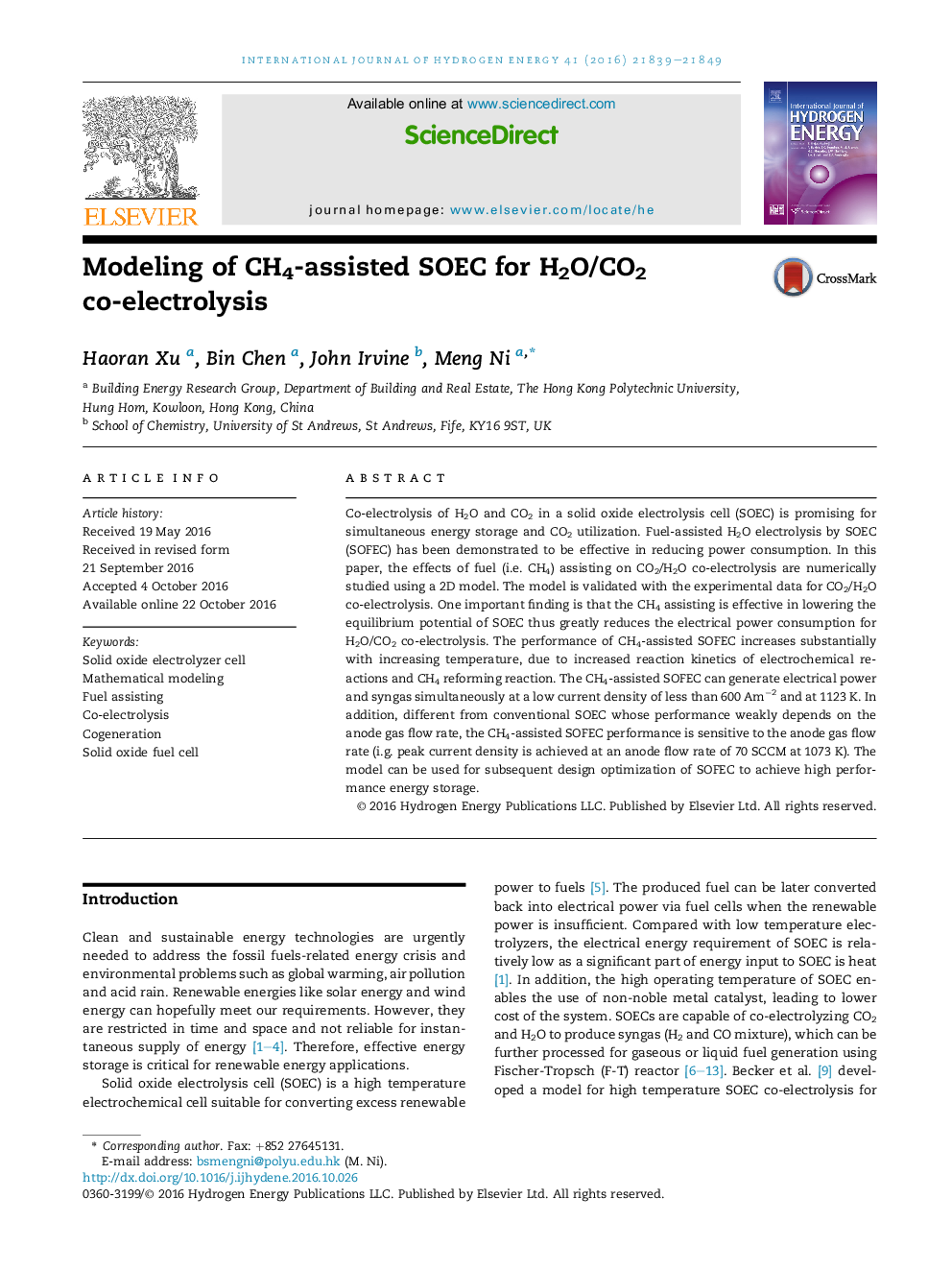| Article ID | Journal | Published Year | Pages | File Type |
|---|---|---|---|---|
| 5147205 | International Journal of Hydrogen Energy | 2016 | 11 Pages |
Abstract
Co-electrolysis of H2O and CO2 in a solid oxide electrolysis cell (SOEC) is promising for simultaneous energy storage and CO2 utilization. Fuel-assisted H2O electrolysis by SOEC (SOFEC) has been demonstrated to be effective in reducing power consumption. In this paper, the effects of fuel (i.e. CH4) assisting on CO2/H2O co-electrolysis are numerically studied using a 2D model. The model is validated with the experimental data for CO2/H2O co-electrolysis. One important finding is that the CH4 assisting is effective in lowering the equilibrium potential of SOEC thus greatly reduces the electrical power consumption for H2O/CO2 co-electrolysis. The performance of CH4-assisted SOFEC increases substantially with increasing temperature, due to increased reaction kinetics of electrochemical reactions and CH4 reforming reaction. The CH4-assisted SOFEC can generate electrical power and syngas simultaneously at a low current density of less than 600Â Amâ2 and at 1123Â K. In addition, different from conventional SOEC whose performance weakly depends on the anode gas flow rate, the CH4-assisted SOFEC performance is sensitive to the anode gas flow rate (i.g. peak current density is achieved at an anode flow rate of 70 SCCM at 1073Â K). The model can be used for subsequent design optimization of SOFEC to achieve high performance energy storage.
Keywords
Related Topics
Physical Sciences and Engineering
Chemistry
Electrochemistry
Authors
Haoran Xu, Bin Chen, John Irvine, Meng Ni,
